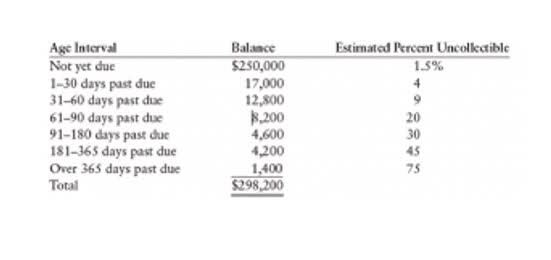
Inherent risk is the natural risk that occurs without any risk management controls. The auditor is not responsible for fraud, but they are responsible for providing reasonable assurance to the users of financial statements. The procedures auditors use to perform risk assessment are inquiry, inspection, observation, and analytical procedures. Audit risk audit risk model refers to the possibility that an auditor may provide an inappropriate opinion on a set of financial statements. Each scenario will have a variety of audit risks and candidates should, as part of their planning, aim to identify as many as possible. They should then decide which of the identified risks they will explain/describe in their answer.

Inherent Risk vs. Other Audit Risks
In order to reduce the complexity of minimizing audit risk, auditors utilize a suite of sophisticated tools designed to enhance the precision and reliability of their work. These tools are not just efficiency enablers; they are crucial in deepening the auditor’s understanding of the financial landscape they navigate, ensuring that no stone is left unturned in the quest to validate financial statements. At the conclusion of an audit, after any corrections are posted, an auditor provides a written opinion as to whether the financial statements are free of material misstatement. Auditing firms carry malpractice insurance to manage audit risk and the potential legal liability. The purpose of an audit is to reduce the audit risk to an appropriately low level through adequate testing and sufficient evidence.
Audit Risk Model
- Audit risk is the risk that auditors issue an incorrect audit opinion to the audited financial statements.
- This is due to the risk of material misstatement is the combination of inherent risk and control risk.
- The auditor is required to assess the risks of material misstatements in the financial statements as per requirement from ISA 315 Identifying and Assessing the Risks of Material Misstatement Through Understanding the Entity and Its Environment.
- This element of the syllabus has been examined in the last three sessions of Paper F8 – in June 2010, December 2010 and June 2011.
- Our audits also included evaluating the accounting principles used and significant estimates made by management, as well as evaluating the overall presentation of the financial statements.
- In order to reduce the complexity of minimizing audit risk, auditors utilize a suite of sophisticated tools designed to enhance the precision and reliability of their work.
Auditor’s responses should focus on how the team will obtain evidence to reduce the risks identified to an acceptable level. Their objective is confirming whether the financial statement assertions have been adhered to, and whether the financial statements are true and fair. Having identified the audit risk candidates are often required to identify the relevant response to these risks. A common mistake made by candidates https://www.bookstime.com/ is to provide a response that management would adopt rather than the auditor. An auditor’s report is a written letter attached to a company’s financial statements that expresses its opinion on a company’s compliance with standard accounting practices. The auditor’s report is required to be filed with a public company’s financial statements when reporting earnings to the Securities and Exchange Commission (SEC).

Audit Risks Model and Calculation:
4See AS 1105, Audit Evidence, for a description of financial statement assertions. Considerations such as the client’s industry, past audit findings, or changes in the business landscape are part of this crucial part of the memo. This site is brought to you by the Association of International Certified Professional Accountants, the global voice of the accounting and finance profession, founded by the American Institute of CPAs and The Chartered Institute of Management Accountants. When an estimation is made, it should be disclosed to financial statement users for clarity. This book is authored by well-known authors in audit, accounting, and finance areas, Karla M. Johnstone, Ph.D., C.P.A. The author holds a Ph.D. in accounting and information systems. The following is one of the best audit materials that could help you better understand audits in more depth and detail.
For example, if the risk of material misstatement is high, auditors need to reduce the level of detection risk. Detection risk is the risk that auditors fail to detect material misstatements that exist on the financial statements. The detection risk of audit evidence for an assertion failing to detect material misstatements is 5%. The audit, therefore, provides (1 – .05) assurance that the financial statements are free from material misstatement. Acceptable audit risk is the auditor’s level of risk that they are willing to accept to release an unqualified opinion on financial statements that can be materially misstated.

Types of Audit Risk: Definition Model Example Explanation
The inherent risk cannot be reduced as it is related to the nature of the business and transaction itself. Hence, auditors can only assess whether it is high, moderate, or low and plan the audit procedures accordingly so that overall audit risk can be minimized. Audit risk is the risk that an audit opinion is incorrectly issued, and it has come from a leak of internal control over financial reporting, poor audit quality, and inherent risks. These risks assessment required auditors to understand the nature of the business and internal control activities that link to financial reporting. By understanding what audit risks are and implementing effective measures such as adequate internal controls, companies can minimize their exposure to these risks and ensure more accurate results from their audits.
- It also considers any dependencies the audit has on client-provided information or other external factors beyond the auditor’s control.
- Inherent risk comes from the size, nature and complexity of the client’s business transactions.
- In other words, the material misstatements of financial statements fail to identify or detect by auditors.
- Conversely, where the auditor believes the inherent and control risks of an engagement to be low, detection risk is allowed to be set at a relatively higher level.
- Auditors usually make use of the relationship of the three components of audit risk to determine an acceptable level of risk.
- Generally, the more complicated a company’s business model and transactions are, the higher the inherent risk is.
More Commonly Misspelled Words

Nearly 50% of the Fortune 500 leverage AuditBoard to move their businesses forward with greater clarity and agility. While auditing is a meticulous examination, it is neither possible nor practical to scrutinize every aspect of a client’s financials. Determining what is material is crucial, and this decision is rooted in not only quantitative but also qualitative aspects.
Detection risk is the risk that the auditor fails to detect the material misstatement in the financial statements and then issued an incorrect opinion to the audited financial statements. This kind of risk could also be affected by the external environment, such as climate change, political problems, or other PESTEL effects. Auditors are required to assess those kinds of risks and set up audit procedures to address inherent risks properly.
A clear understanding of audit objectives and audit scope could help auditors set audit approaches and tailor the right audit program. If the auditor is aware that the potential client has high exposure to inherent risks, and the auditor also knows that the current resources are not capable of handling such a client, the audit should not accept the engagement. The auditor assesses the risks at the entity control level and deep dives into the risks related to the activities control level that could significantly affect the quality of financial information. Generally speaking, higher levels of audit risk will result in higher fees charged to clients by auditors. Detection risk can be reduced by auditors by increasing the number of sampled transactions for detailed testing. Auditors may also tick the control risk as high when they believe that it is more effective to perform the test of detail rather than reliance on internal control.

Recent Comments